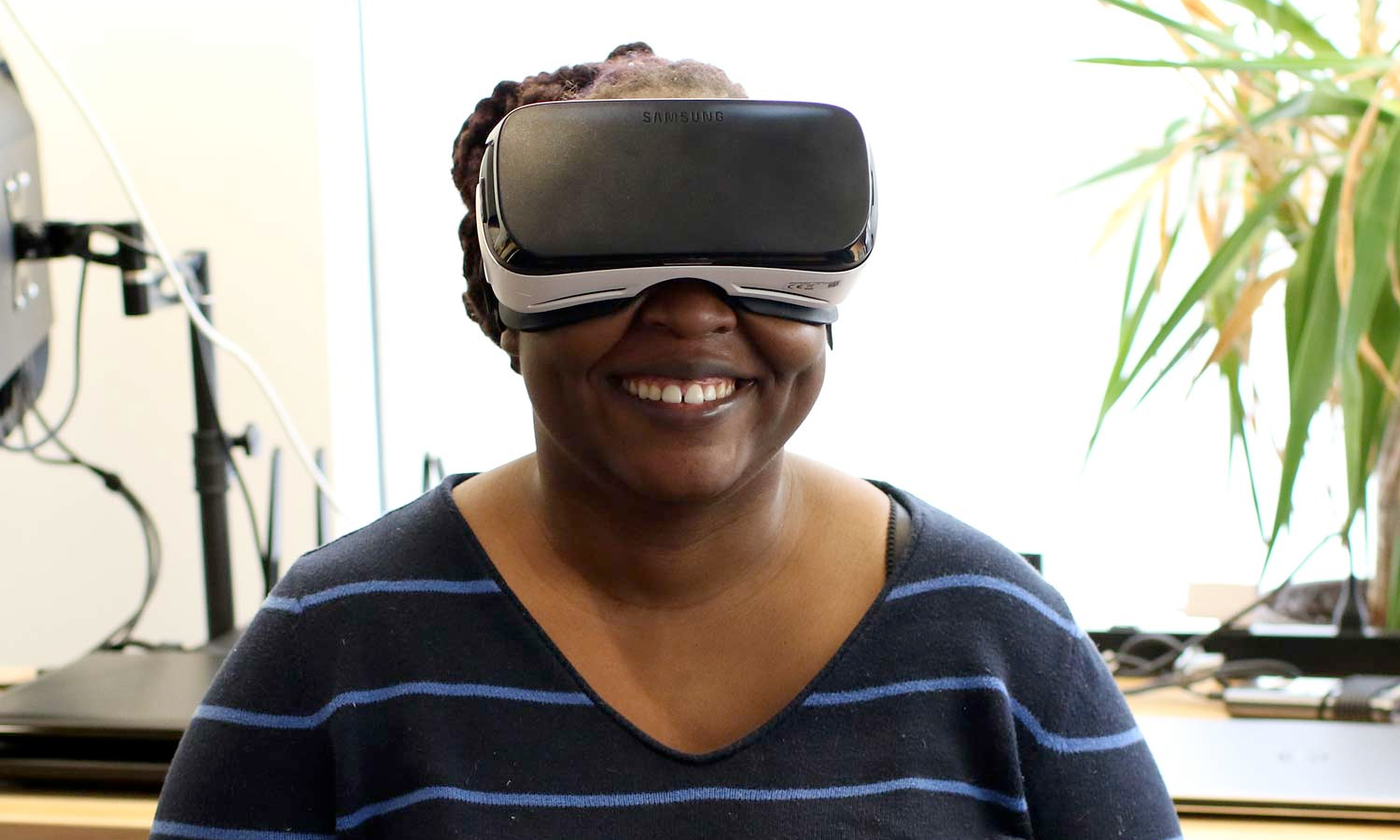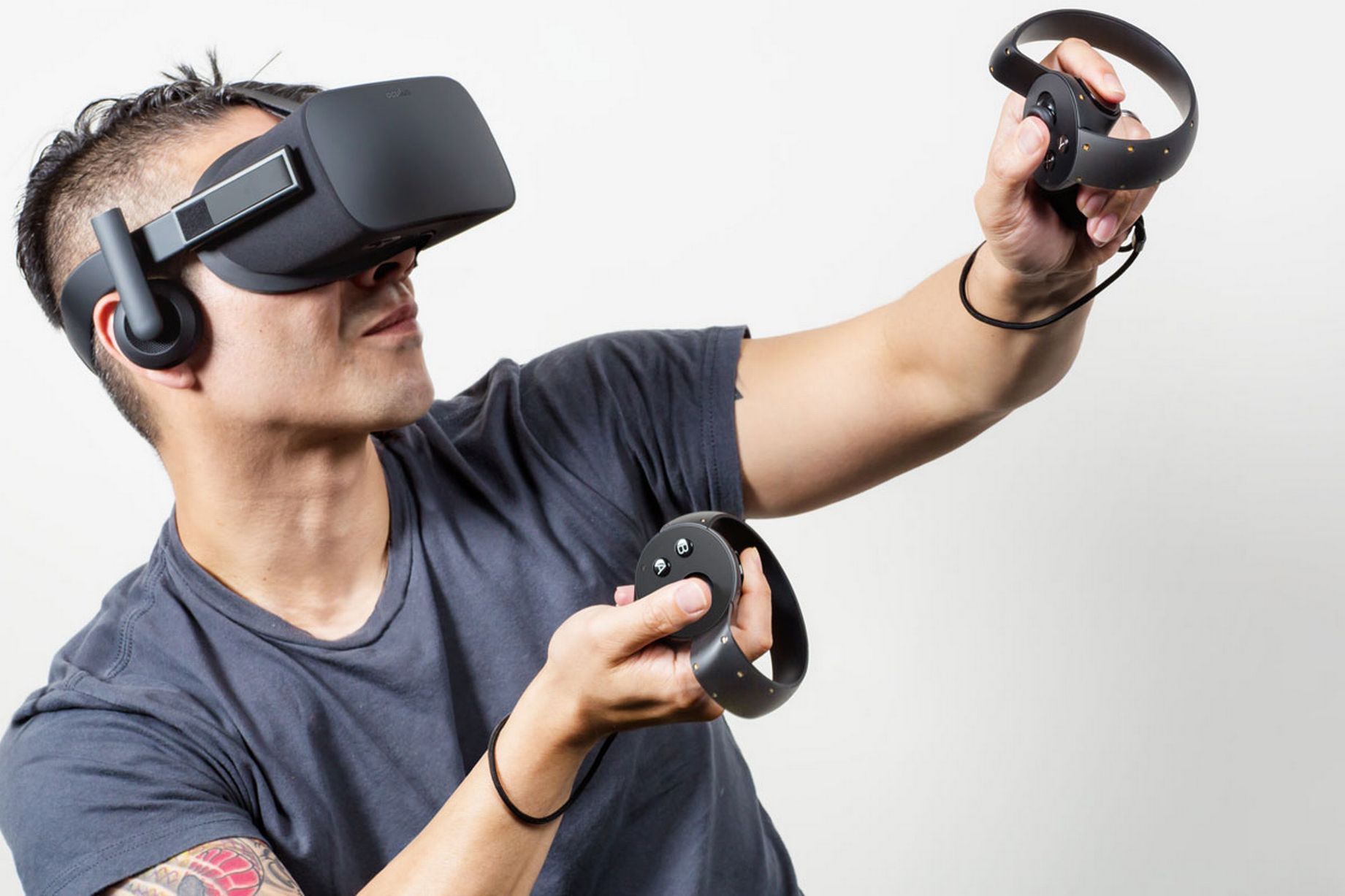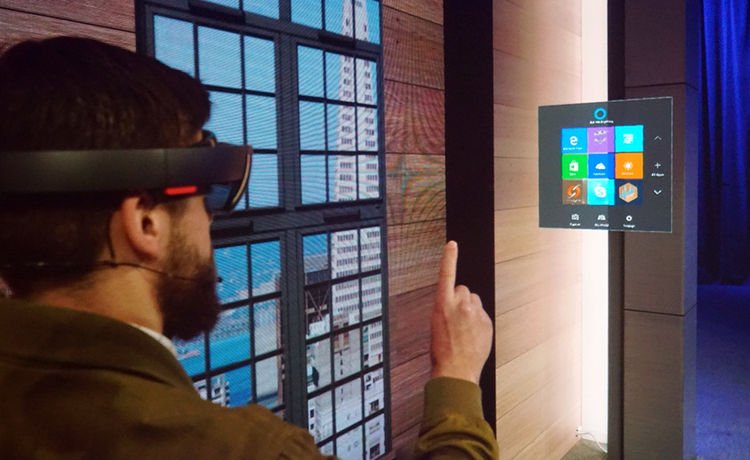What’s Next for VR: More Useful Content, Less Nausea
Virtual reality is changing the face of entertainment. Hear from Oculus co-founder Palmer Luckey and other experts on what's coming next.
From flying a jetpack in a 360-degree world to getting up close and personal with a T-rex, 2015 was the year more people experienced virtual reality for the first time. Even more powerful hardware is on the way in the form of the Oculus Rift and the HTC Vive, but it's the software and experiences that will be the tipping point for the entire category. And we're not just talking about playing games.

"Some of the most used applications have nothing to do with gaming," said Palmer Luckey, the founder of Oculus VR. His company's software powers the Gear VR, a $99 headset that uses Samsung phones such as the Galaxy S6 as the display. For instance, Oculus Video lets you watch videos with other people in a social space. "I have friends that are all over the country ... and with this we can actually feel like we're there watching the movie together and guessing what's going to happen," Luckey said.
Sherri Smith, who covers VR for Tom's Guide, is excited by upcoming games like Bullet Train, which lets you literally pick up a gun with your virtual hands and start shooting, but she's been equally impressed by other content. "With an app like Vrse, you can be in the middle of a protest, or watch fireworks by the Brooklyn Bridge and look at people around you," Smith said.
We can actually feel like we're there watching the movie together and guessing what's going to happen. -- Palmer Luckey, founder, Oculus VR
MORE: The Biggest Tech Trends of 2016
It's important to keep in mind that VR is really just getting started, and that there's going to be growing pains as developers learn to leverage this new platform. "If you're interested in VR it's going to be an awesome year," Luckey said. "But it's not going to be the year that everyone gets interested in virtual reality."

Regardless, "2016 is going to be a pivotal year," said Ramon Llamas, research manager for wearables and phones at IDC. "We should approach it with a mixture of excitement and caution. We're going to be treated to a lot of first-generation experiences. You're going to see some shortcomings, warts and all."
MORE: VR Headset Mega Guide: Features and Release Dates
Arriving in early 2016, the Rift headset requires a beefy PC with discrete graphics to give it life, but based on our numerous hands-on demos, the result should blow consumers away. The company will be showing its latest VR games and content at CES 2016, and we expect that Oculus will let attendees test-drive its Touch controllers (arriving after launch), which will let you do things like scale mountains in games like The Climb.
While the Gear VR gives you the freedom to take the virtual reality experience with you, the Rift delivers much sharper visuals and better overall performance, truly blurring the line between what's virtual and what's real. "You are a lot more limited with what you can do with mobile," Luckey said. "It's not the limitless canvas that you have on a PC, where basically anything the developer can come up with they can make. PCs have enough power where if you want to have 100 enemies on-screen, they can do that."
Meanwhile, HTC says its Vive headset won't see daylight until April, which should give Oculus a healthy head start. "It's going to be tough for HTC to compete with a company with unlimited funds like Oculus," said Stephen Baker, vice president of industry analysis for consumer electronics at NPD.
Nvidia's GameWorks VR is going to make rendering a lot more efficient...so you don't catch the herk and jerk. -- Sherri Smith, Tom's Guide
It's not game over for the Vive, though, as it has a strong partner in Valve. Plus, the Vive uniquely maps the room you're using to play, allowing you to move within the VR world.
The one complaint many first-time VR users have is that the experience can leave them feeling a bit nauseous, but the pioneers in this space are working hard to minimize that sensation.
"The technology is getting better," Smith said. "Nvidia's GameWorks VR is going to make the rendering a lot more efficient, so it will cut down even more on latency, and maintain the 90 frames per second needed so that you don't catch nausea ─ or, as I like to call it, the herk and jerk."
As VR evolves, it could change the way we do a lot of things and make traditional Web browsing a thing of the past.
"I think about booking a cruise," said Shawn DuBravac, chief economist for the Consumer Technology Association. "You'll walk the deck, you'll go to from the pool to the restaurant and then to the cabin to see how big the cabin is. All of that could be incorporated into a virtual-reality experience."
Another huge opportunity for virtual reality is consumer-generated content. With more 360-degree cameras coming online, like the Ricoh Theta ($350), you'll see more people sharing VR videos of life events to make it feel like you were there. "One of the guys in our Japan office actually captured his wedding using 360 cameras and was able to show it to family members who weren't there on VR," Luckey told Tom's Guide.

Augmented reality, which differs from virtual reality by layering information on top of your live view instead of completely replacing the real world, is probably at least another year away from entering the mainstream. But devices like Microsoft's HoloLens have massive potential, which will let you do things like turn your living room into a Minecraft game, or let someone walk you through installing a light switch by drawing on your field of vision. The secretive Magic Leap, which is also developing an augmented reality product, managed to procure half a billion dollars from Google.
"What’s neat to me with augmented reality is the enterprise opportunity," Llamas said. “The entire see-what-I-see experience. Augmented reality can really help manufacturing and design, customer service and field duties."
"I think augmented reality right now is on a path to be used for industrial and enterprise applications before consumer applications," Luckey said. "I don't think we've seen the killer app for AR. Mainstream consumer virtual reality is a lot closer than mainstream augmented reality."
| 2016 TECH TRENDS TO WATCH: What You Need to Know |
| What's Next for Wearable Tech: What Will Make You Healthy? |
| What's Next for Laptops: OLED Screens, Oculus-Ready Gaming |
| What's Next for Drones: Super Selfies, GoPro Karma, FAA Confusion |
| What's Next for TV: 4K Goes Mainstream, But Here Comes HDR |
| What's Next for Car Tech: The Road to Self-Driving Autos |
| What's Next for Smart Home: Simplicity Trumps Smarts |
Sign up to get the BEST of Tom's Guide direct to your inbox.
Get instant access to breaking news, the hottest reviews, great deals and helpful tips.
Mark Spoonauer is the global editor in chief of Tom's Guide and has covered technology for over 20 years. In addition to overseeing the direction of Tom's Guide, Mark specializes in covering all things mobile, having reviewed dozens of smartphones and other gadgets. He has spoken at key industry events and appears regularly on TV to discuss the latest trends, including Cheddar, Fox Business and other outlets. Mark was previously editor in chief of Laptop Mag, and his work has appeared in Wired, Popular Science and Inc. Follow him on Twitter at @mspoonauer.

